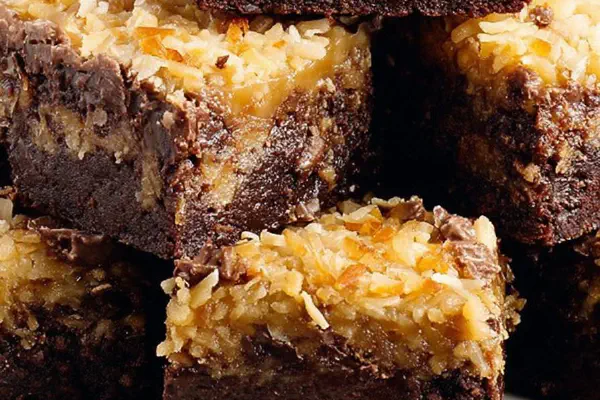Featured Recipe
Double Chocolate Crinkle Cookies

By Kate
"
Dense, fudgy cookies with deep chocolate punch, cracked surface dusted in confectioners sugar. Uses mix of all-purpose and cake flours for tenderness, with cornstarch added—lightens crumb, adds snap. Butter creamed cold, not softened, keeps dough cold, holds shape baking. Two leaveners, soda and powder, balance rise and crumb. Chocolate chips folded last for melty richness. Rolled twice in powdered sugar, optional granulated sugar base to keep coating intact. Baking sheet doubling keeps bottoms pale, stops crisping too far. Cool fully, rest on sheet, they firm without drying.
"
Prep:
15 min
Cook:
15 min
Total:
40 min
Serves:
6 large cookies
cookies
chocolate
baking
dessert
Introduction
Cold butter, not softened, holds cookie shape. Cake flour balances density with tenderness; cornstarch keeps crumb snappy. Mix dry ingredients first; clustering cocoa powder evenly avoids bitter pockets. Creaming cold butter short time softens it without melting. Sugar layering technique—granulated then confectioners—keeps sugar visible post-bake and prevents melting into dough, signals done cookies by texture and appearance. Double up cookie sheets for bottom protection, prevents dark undersides while soles stay chewy. Pulling out cookies ’early’ with cracked tops and matte surface is key—carry-over heat finishes job, no dry crisp edges. Cool on sheet first—shifts texture from fragile warm dough to stable finished cookie. Chocolate chips tempered last for even melt, flavor bursts. This method ensures marked cracks with depth in flavor and texture. No greasy shine, no flat dough puddles, solid classic crinkles with a touch of complexity.
Ingredients
About the ingredients
Substitute cake flour with same amount plus a teaspoon of cornstarch. Use Dutch-process cocoa powder for richer chocolate color and deeper flavor. Swap butter for European style for higher fat content, yielding richer mouthfeel. Brown sugar adds moisture and molasses depth; don’t replace with all white sugar or risk dry crumb. Eggs are large for structure but yolk addition increases richness, preventing dryness. Vanilla extract is non-negotiable; replaces flat taste with aromatic lift. Use confectioners sugar fresh, sift before rolling to avoid chunks. Optional granulated sugar creates a barrier that holds powdered sugar intact after baking—prevents melting into dough too early during oven heat ramp. Cookie size flexible, adjust bake time accordingly but watch cues. Double pan method avoids burnt bottoms, a neat kitchen hack when baking multiple trays or high heat. Cornstarch adds tenderness missing from all-purpose alone—no substitute with flour alone.
Method
Technique Tips
Start with dry sifted mix. Proper flour distribution critical so no volcanic clumps of dry powder. Cold butter creaming—not melting—creates flaky crumb and distinct edge definition. Mix sugars separately for balanced caramel notes; don’t rush or overbeat or risk grainy texture or greasy dough from overworked butter. Eggs gently fold in to avoid deflating creamed butter. Adding dry blend slowly prevents flour explosions, keeps dough cohesive and even. Chocolate chips last to avoid crushing, clumping, or uneven melting. Rolling cookies twice in confectioners sugar traps light sweetness and creates signature crinkle crease. Double pan trick absorbs heat to soften cooking bottom while top crisps mid-oven. Peek at 12 minutes; cracks fully formed, tops matte, edges set but centers still jiggly under slight pressure. Remove then cool fully for final firmness. Spatula transfer essential; prying can destroy structure. Store airtight to maintain chewy middle, retain sugar coating intact. Timing flexible based on oven quirks but cues firm checks on doneness.
Chef's Notes
- 💡 Cold butter crucial; keeps shape. Only 25 seconds creaming—too long means melted chunks. Chocolate chips last to avoid melting early. Roll in granulated sugar first if using. Then powdered sugar—keeps crinkles visible.
- 💡 Watch for cracked tops. Bake at 390; adjust for oven quirks. Sizzling noise fades as edges firm—listen closely. Double pan method—flip a sheet for bottom protection, no burnt bottoms.
- 💡 Use Dutch-process cocoa; darker, richer flavor. If no cake flour, substitute with regular flour plus cornstarch. Butter swap: European style for extra richness—better mouthfeel.
- 💡 Eggs matter, large for structure. Egg yolk adds moisture—richness increased, don’t skip. Confectioners' sugar sift first, avoids clumps. Roll cookies twice for signature look; traps sweetness.
- 💡 Cooling on pan first is key. Fragile, needs time to firm up before moving. Airtight storage keeps cookies soft; reheating helps if they dry out.
Kitchen Wisdom
How to avoid dry cookies?
Monitor baking time closely. Remove cookies when cracked but tops still moist. Don’t overmix dough; keeps them tender. Rest on pan—they firm without drying.
What to do if cookies spread too much?
Check cold butter—must be firm. Scrape sides when mixing sugar. Keep dough chilled if it gets too warm. Smaller balls can help.
Can I freeze these cookies?
Yes, freeze before baking. Scoop and roll in sugar; place balls on sheet in freezer. Once frozen, store in bags. Bake from frozen—add one or two minutes.
Best storage for leftovers?
Airtight container; retains softness. If cookies harden, quick spin in microwave revives them. Don’t stack if coated; sugar might break.



